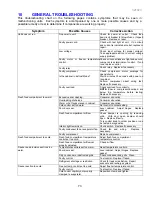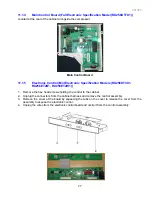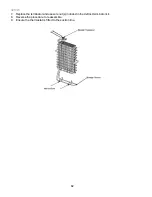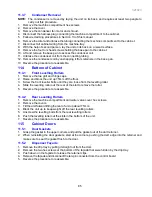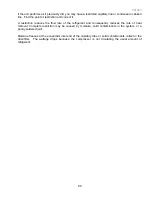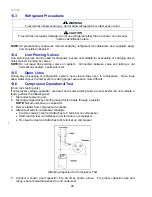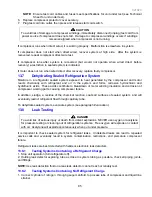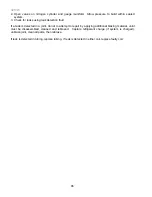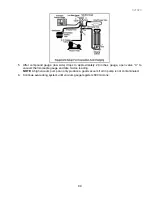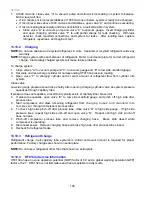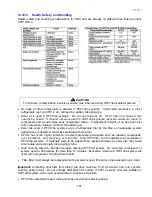
321023
87
12
SEALED SYSTEM DIAGNOSIS
CONDITION Suction
pressure
variation
from
normal
Head
pressure
variation
from
normal
T1 inlet
temperature
variation from
normal
T2 outlet
temperature
variation from
normal
T3 suction
temperature
variation from
normal
Wattage
variation
from
normal
Refrigerant
Overcharge
Increase Increase Warmer
Warmer
Colder
Increase
Shortage of
Refrigerant
Decrease Decrease or
Increase
See Text
Colder Warmer Warmer
Decrease
Partial
Restriction
Decrease Decrease or
Increase
See Text
Note 2
Colder Warmer Warmer
Decrease
Air in
System
Near
Normal
Increase Warmer Warmer
Warmer Increase
Low Ambient
Installations
(High
Ambients
the
Decrease Decrease
Colder
Warmer
Warmer
Decrease
Additional
Heat Load
Increase
Increase Warmer Warmer
Warmer Increase
Inefficient
Compressor
Increase Normal
or
Decrease
Warmer or
Colder
Warmer Warmer
Decrease
12.1
Symptoms of an Overcharge
•
Above normal freezer temperatures.
•
Longer than normal or continuous run.
•
Freezing in fresh food compartment, especially on forced air meat keeper models.
•
Higher than normal suction and head pressure.
•
Higher than normal wattage.
•
Evaporator inlet and outlet temperatures warmer than normal.
•
Suction tube temperature below ambient. Always check for separated heat exchanger when
suction temperature is colder than ambient.
Various conditions could indicate an overcharge. For example, if the cooling coil is not defrosted at
regular intervals, due to a failure of the defrost system, the refrigerant will "flood out" and cause the
suction line to frost or sweat. The cause of this problem should be corrected rather than to purge
refrigerant from the system. Running the freezer section colder than necessary (-2 to -1
O
F is
considered normal package temperatures) or continuous running of the compressor for a variety of
reasons, or the freezer fan motor not running, may give the indication of an overcharge.
12.2
Symptoms of Refrigeration Shortage
•
Rise in food product temperature in both compartments. (See Note 1 below.)
•
Long or continuous run time.
•
Look for obvious traces of oil that would occur due to a leak or cracked refrigerant line.
•
Lower than normal wattage.
•
Compressor will be hot to touch because of the heat generated by the motor windings from long
continuous running. It will not be as hot as it would be with a full charge and long run times for
some other reason such as a dirty condenser.
Содержание RX256DT4X1
Страница 11: ...321023 11 2 3 Refrigerant Flow...
Страница 12: ...321023 12 2 4 Cabinet Air Flow...
Страница 13: ...321023 13 2 5 Ice And Water Dispenser Diagram...
Страница 14: ...321023 14 2 6 Water Valve Diagram...
Страница 15: ...321023 15 2 7 Typical External Sweat Pattern...
Страница 16: ...321023 16 3 INSTALLATION...
Страница 17: ...321023 17...
Страница 18: ...321023 18...
Страница 76: ...321023 76 Ice Water Dispensing Board...
Страница 78: ...321023 78 Mid Electronic Specification Control RX256DT4X1 RX256ET2B1 RX256ET2W1...
Страница 104: ...321023 104 14 WIRING DIAGRAMS 14 1 Wiring Schematic RX256DT7X1...
Страница 105: ...321023 105 14 2 Wiring Diagram RX256DT7X1...
Страница 106: ...321023 106 14 3 Wiring Schematic RX256DT4X1 RX256ET2B1 RX256ET2W1...
Страница 107: ...321023 107 14 4 Wiring Diagram RX256DT4X1 RX256ET2B1 RX256ET2W1...
Страница 108: ...321023 108 NOTES...

